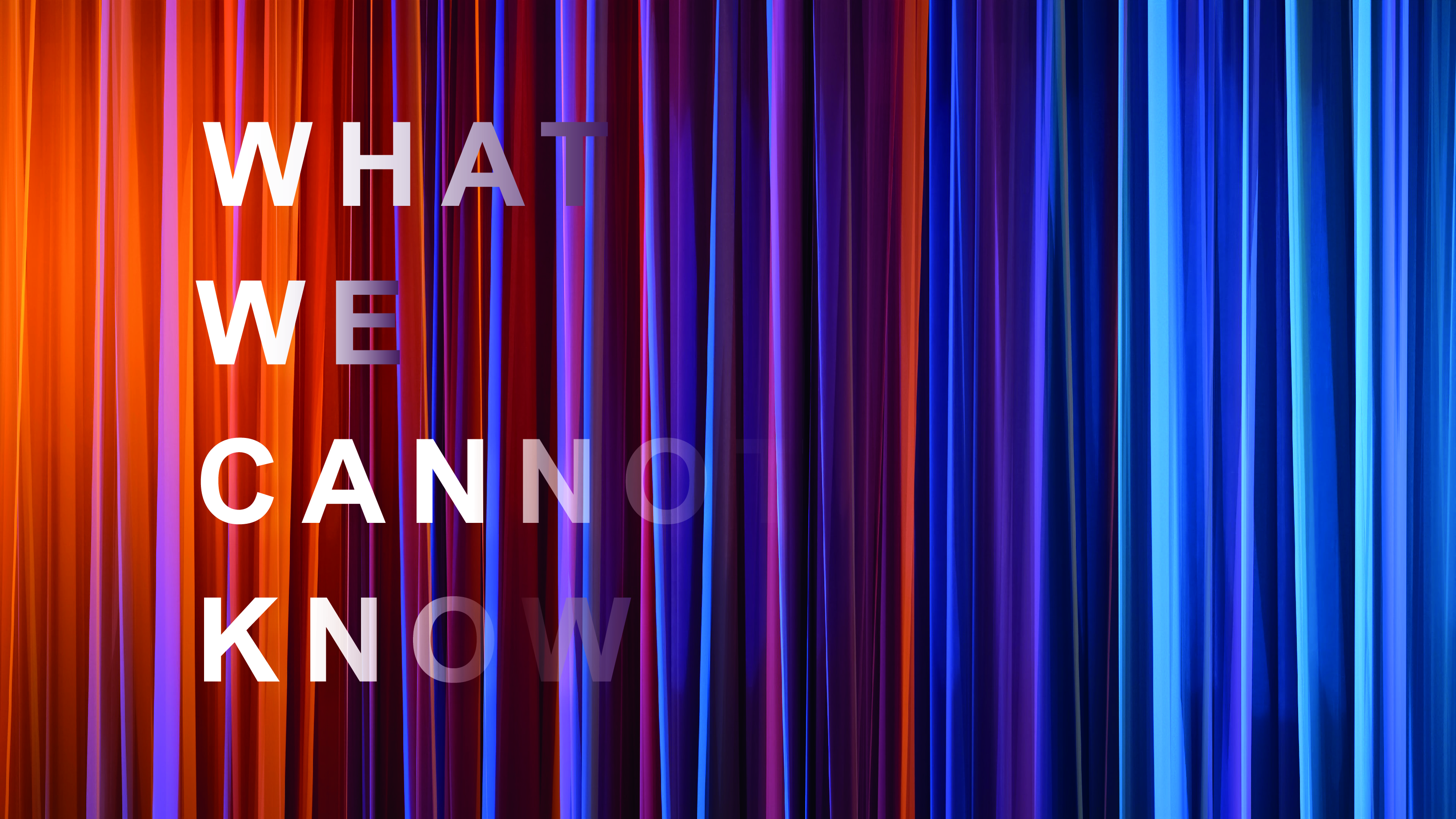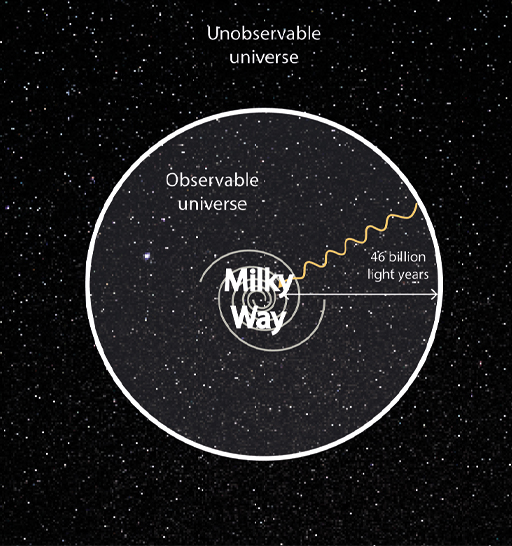3 The observable universe
You might be thinking: with ever bigger and more advanced telescopes, surely our view of the universe will keep increasing with no limit? But that’s not quite how it works.
We are reasonably confident that the universe is around 13.8 billion years old. It began in a state of extremely high density and has been expanding ever since. This initial expansion is known as the ‘Big Bang’. How far light travels over time influences the distance we’re able to see. Given the universe’s finite age, then it follows logically that this distance also has a limit. This means that however big the universe might be, the part that we can actually see – known as the ‘observable universe’ – is strictly limited. The universe as a whole may well be infinite, but the observable universe is not.
If the observable universe is finite, then how big is it? You might logically presume that if light from the most distant parts has been travelling for 13.8 billion years, then the ‘edge’ of the observable universe must be 13.8 billion light-years from us. But it’s not quite that simple either. This would be correct if the universe were static – if all the galaxies were stationary. But in fact, the universe is expanding, and the galaxies have been moving away from each other ever since the Big Bang.
That makes our estimates somewhat difficult. The expansion means that distant galaxies were much closer to us when their light was emitted. They’re much further away from us now. To work out where they are today, some assumptions need to be made about the speed of the universe’s expansion throughout its life. Recent estimates indicate that if the universe is 13.8 billion years old, the very edge of the observable universe will now be about 46 billion light-years away. You can think of us sitting in the middle of a sphere 46 billion light-years in radius that contains everything that we can ever know about.
Establishing the limits of the observable universe raises another question. How far can we see within the observable universe?

